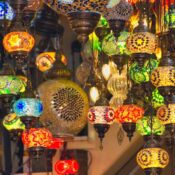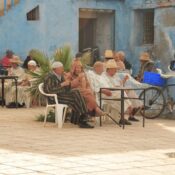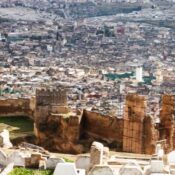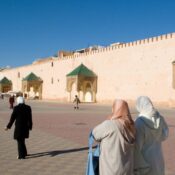
Exploring the Oldest Inhabited Cities in Morocco
Morocco is a land where history breathes through ancient medinas, centuries-old mosques, and timeless streets that have witnessed the rise and fall of dynasties. Beyond its famous Sahara Desert dunes and bustling souks, the country preserves some of the oldest continuously inhabited cities in the world, offering travelers a chance to step into living history. From the imperial capital of Fes to the charming alleys of Chefchaouen, every city carries a unique story shaped by Berber, Arab, Andalusian, and French influences.
In this article, we will take you on a journey through Morocco’s oldest inhabited cities, uncovering their cultural heritage, UNESCO World Heritage status, and must-see attractions.
Why Explore Morocco’s Ancient Cities?
Visiting these historic cities is more than just sightseeing—it is an immersion into the heart of Moroccan culture. Ancient medinas still serve as hubs of trade, mosques remain active centers of worship, and traditional artisans keep centuries-old crafts alive. Exploring these cities allows you to:
- Discover Morocco’s rich Islamic and Berber history.
- Walk through UNESCO World Heritage Sites.
- Experience authentic Moroccan traditions in daily life.
- Learn about the architectural genius of the past.
- Connect with locals who carry forward their ancestors’ heritage.
Whether you are a culture enthusiast, a history lover, or a curious traveler, Morocco’s oldest cities promise an unforgettable experience.
Fes – The Spiritual and Cultural Capital of Morocco
A Glimpse into History
Founded in the 8th century by Idris I, Fes is one of the oldest and most important cities in Morocco. Its ancient medina, Fes el-Bali, is a UNESCO World Heritage Site and is often considered the best-preserved medieval city in the Arab world.
Highlights of Fes
- Al-Qarawiyyin University – Established in 859, it is recognized as the world’s oldest continuously operating university.
- Medina of Fes el-Bali – A labyrinth of over 9,000 narrow streets filled with souks, tanneries, and artisan workshops.
- Bou Inania Madrasa – An architectural masterpiece of Marinid design.
- Chouara Tannery – Famous for its colorful dyeing pits, a tradition dating back centuries.
Why Visit Fes?
Fes is a living museum where history is not frozen but actively practiced. From Islamic scholarship to traditional crafts, it remains the beating heart of Moroccan heritage.
Marrakech – The Red City of the Almoravids
Historical Background
Founded in 1070 by the Almoravid dynasty, Marrakech quickly became a political, economic, and cultural powerhouse. Nicknamed the Red City because of its reddish-pink sandstone walls, it has inspired artists, scholars, and traders for centuries.
Highlights of Marrakech
- Jemaa el-Fnaa Square – A lively UNESCO cultural site filled with storytellers, musicians, and street food.
- Koutoubia Mosque – The city’s most famous landmark with its stunning minaret.
- Saadian Tombs – Resting place of the powerful Saadian dynasty.
- Bahia Palace – A 19th-century masterpiece of Moroccan architecture.
Why Visit Marrakech?
Marrakech blends the ancient and modern, making it one of Morocco’s most visited cities. Its medina tells stories of past dynasties, while its vibrant souks and gardens create a sensory journey.
Meknes – The Imperial Legacy
Historical Background
Meknes, founded in the 11th century, rose to prominence under Sultan Moulay Ismail in the 17th century. He envisioned it as the Versailles of Morocco, building massive gates, palaces, and mosques.
Highlights of Meknes
- Bab Mansour Gate – One of the most beautiful gates in Morocco.
- Moulay Ismail Mausoleum – Resting place of the powerful sultan.
- Royal Stables – Designed to house 12,000 horses.
- Volubilis (near Meknes) – A Roman city and UNESCO World Heritage Site.
Why Visit Meknes?
Compared to Marrakech and Fes, Meknes is quieter but equally rich in history. Its grandeur reflects Morocco’s imperial past, offering travelers an authentic experience without heavy crowds.
Rabat – The Political Capital with Ancient Roots
Historical Background
Rabat, today’s capital of Morocco, traces its history back to the 12th century when it was established by the Almohad dynasty. Despite its modern role as the seat of government, Rabat preserves its ancient medina and monuments.
Highlights of Rabat
- Hassan Tower – An unfinished minaret from the 12th century.
- Kasbah of the Udayas – A fortress with Andalusian-style gardens.
- Chellah Necropolis – Ancient Roman and Islamic ruins.
- Rabat Medina – A UNESCO World Heritage Site filled with markets and traditional houses.
Why Visit Rabat?
Rabat offers a unique mix of modernity and history. It is less touristy than other imperial cities, making it ideal for travelers seeking cultural depth with a relaxed atmosphere.
Chefchaouen – The Blue Pearl of Morocco
Historical Background
Founded in 1471, Chefchaouen started as a fortress to defend against Portuguese invasions. Over time, it became home to refugees from Spain and developed into a charming town with a distinct identity.
Highlights of Chefchaouen
- Blue Medina – Famous for its blue-washed alleys and houses.
- Kasbah Museum – Showcasing local history and traditions.
- Grand Mosque – Built in the 15th century with unique architecture.
- Rif Mountains – Offering scenic views and hiking opportunities.
Why Visit Chefchaouen?
Chefchaouen is not only photogenic but also historically significant. Its Andalusian influence and serene atmosphere make it one of Morocco’s most enchanting old cities.
Other Ancient Cities Worth Visiting
While Fes, Marrakech, Meknes, Rabat, and Chefchaouen dominate the spotlight, Morocco has several other historically inhabited cities worth exploring:
- Tétouan – Known for its Andalusian architecture and UNESCO-listed medina.
- Essaouira – A coastal city with Portuguese, Berber, and French influences.
- Ouarzazate – The gateway to the Sahara with a history as a caravan trading hub.
Practical Tips for Exploring Morocco’s Old Cities
- Hire a Local Guide – Navigating medinas can be challenging; guides enhance the experience.
- Visit Early Morning – To enjoy sites with fewer crowds.
- Respect Traditions – Dress modestly and ask before photographing locals.
- Stay in a Riad – Traditional Moroccan guesthouses inside the medinas offer authentic experiences.
- Try Local Food – Each city has unique dishes reflecting its history.
Morocco’s oldest inhabited cities are more than destinations; they are living chronicles of civilizations that shaped North Africa. Exploring them means walking in the footsteps of scholars, sultans, and traders while experiencing the vibrant traditions that still define Moroccan culture today.
If you are planning a Morocco tour, make sure to include these cities in your itinerary for a deep cultural journey that combines history, architecture, and authentic human connections





